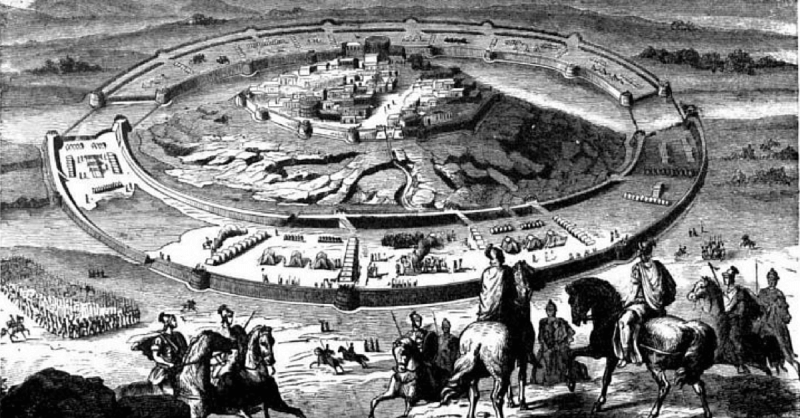The Roman conquest of Spain was a long and arduous process. Several tribal groups occupied the Iberian Peninsula and each was a fierce and warlike as the next. The Carthaginians were the first of the “civilized” powers to occupy parts of the region with the exception of some Greek coastal colonies.
Spain became a vital asset to expanding powers because of the huge wealth potential of mining the area, plenty of gold could be found along with high-quality metal. Not only that, the fertile but mountainous land gave an abundance of mercenaries, well versed in fighting from constant tribal wars.
The Celts had migrated into the peninsula long before the Carthaginians arrived and mixed with the native Iberians to create the Celtiberians. The resulting cultural group seemed to provide the strengths from both groups. Celtiberians were considered uncivilized, but still were some of the most sought after heavy infantry at the time, rivaling even the Roman legions in combat.
During the Punic Wars Rome and Carthage fought over the valuable Iberian Peninsula with Rome becoming the victory and overseer of much of southern and eastern Spain, almost entirely due to the Scipio family, with the elder Scipio and his brother giving their lives in battle and the young Scipio Africanus finally securing the region. As the Romans pushed further, however, they met fierce resistance from proud and passionately free tribes.
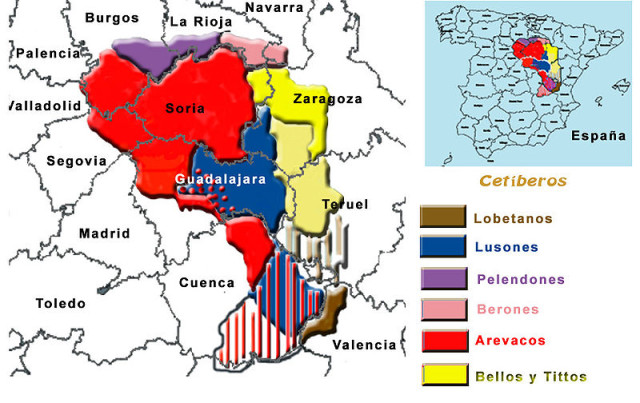
The mountainous terrain was dotted with small and occasionally substantial settlements, obvious targets for the Romans, the problem was getting there. The various tribes ambushed and harassed Roman armies until they essentially fell apart. Commanders became too afraid to take the strategic initiative and though some progress was made in these decades, it was slow and painful for the legions and those following in Rome.
The large city of Numantia was the heart of Roman resistance and it’s capture was vital to the security of the region. Several Roman commanders tried, and failed to take the city by force. One such commander, Gaius Hostilius Mancinus, attacked the city several times with well over 20,000 men but failed and was repulsed by a counter-attack.
While attempting to flee in the middle of the night his force was surrounded and a peace treaty had to be drafted by the later-to-be-famous Tiberius Gracchus. The next Roman commanders in the region played it safe and avoided any action against the Numantines.
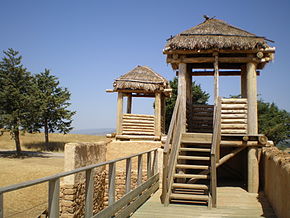
Enough was enough and finally, after decades of frustrating wars, the Senate sent in another Scipio. Scipio Aemilianus was the adopted grandson of the great Africanus and the biological son of Lucius Aemilius Paullus Macedonicus who shattered the Macedonians’ power at the battle of Pydna.
Aemilianus was a young man but had already won enough glory to give him the cognomen Africanus like his grandfather. Though the Carthaginians had lost a great deal of power since their defeat in the Second Punic War, their great city was still a formidable fortress. Similar to Numantia, the Roman commanders had a hard time taking Carthage during the Third Punic War.
Young Scipio rose through the ranks during the engagement and finally assumed command and captured the city as old as Rome.
Scipio assumed command of the battered and defeated legionaries in Spain and quickly went about restoring order. The morale of the men was bottomed out but Scipio would strengthen that by giving the men their confidence of their ability again. Soldiers trained with shields many times the normal weight, and many beasts of burden were sold off so that the men could carry their own supplies.
Interestingly, none other than Gaius Marius was present for this campaign, either already with the beleaguered Romans or part of Scipio’s group just arriving in Spain.
The strict discipline and order, the hardening of the men from being responsible for their own packs was all witness by Marius and may well have been influential in the later creation of the famous Marian Mule example of a Roman Legionary. Furthermore, if Scipio could make such a defeated, inefficient and depressed legion into a dangerous, professional force, perhaps any man, regardless of wealth or holdings, could be a soldier.
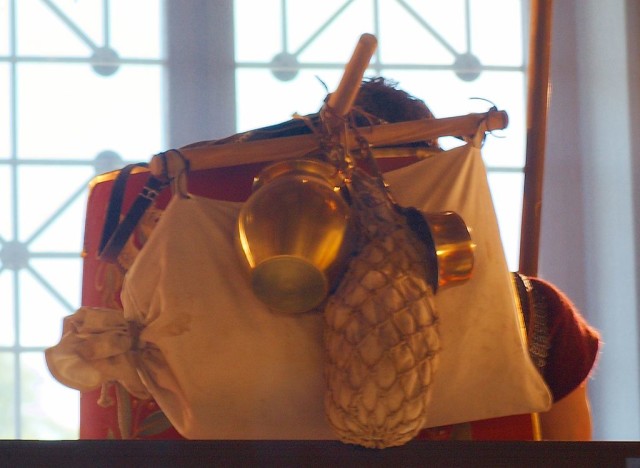
Probably the biggest reason this new training and turnaround was successful and accepted by the soldiers was because Scipio practiced what he planned. A quote from Appian : “They were forbidden to have beds, and Scipio was the first one to sleep on straw” though this is a commonly sought after trait in generals it was quite uncommon in the period and harkened back to the past Scipios unafraid to join their men and fight with them when needed.
The training was extremely rigorous, intended to prepare the men for what Scipio knew he had to do, take the city of Numantia. Men built walls and dug ditches only to practice filling them and tearing them down. To prepare for ambushes he had his men walk in an orderly square formation with strict care paid to the pace to keep formation. Scipio often rode from the front to the back to keep order and organize the march.
Finally, after sensing that his army was ready, Scipio set up siege works against Numantia. Scipio knew that circumvallation was the best way to contain and starve out the Numantines but this required tens of thousands of men to man the long encircling walls and fight off enemy reinforcements. He had about 20,000 Romans but had hired around 40,000 mercenaries, including the supremely skilled Numidian cavalry.
With a large amount of well-trained men, the fortifications were constructed quickly and efficiently. The wooden walls had steep ditches with stake pits and often a series of hills to break attacks. Many towers dotted the walls as well. Scipio refused a battle when the Numantines marched out to offer it and did not want any warrior or civilian killed if it wasn’t necessary as the more people who were in the city, the faster they would starve.
Messengers were stationed at each tower as well as the towers having signal flags in case of danger. In this way, Scipio could be apprised of any problems from wherever he was and be assured that the tower signals would allow his troops to rally at any problem area.
Word reached a nearby tribe of Lutia where several hundred young warriors were eager to fight the Romans. The elders, however, knew of and feared Scipio and so sent him a warning. Scipio was able to capture these young warriors and cut off their hands, sparing their lives while sending a harsh message to other tribes.
The Numantines tried several times to breach the walls, it was not in their nature to sit and wait out a siege. Many times the Numantines ran over the hills and threw ladders and ropes to scale the wall, but Scipio’s crisis management and organization combined with the instilled training of the men and no major breaches occurred. When damage was done, the Romans didn’t need to wait for engineers, they each had the skill to repair and rebuild the walls quickly.
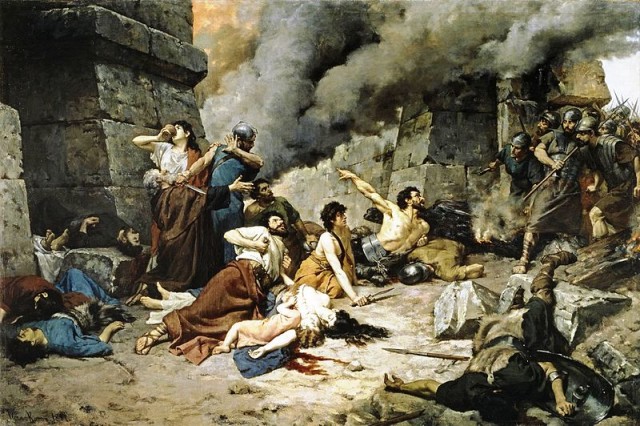
After months of starvation that resulted in cannibalism of the dead and even murders to kill and eat the weak, the Numantines considered surrender. large amounts on infighting killed more and many proud men chose suicide, but a small group of tired and defeated Numantines marched out and surrendered.
The siege of Numantia has been equated to the Spanish equivalent of the Siege of Masada, absolute defiance in spite of overwhelming odds. a Spanish phrase “Defensa numantina” means a stout last-ditch resistance to invading forces and Numantine resistance is a phrase implying absolute stubborn resistance, even against insurmountable odds.
Scipio had brought a peace to the region that would last close to a century. He came in as a man so young he had to have special dispensation to be allowed to be Consul, and whipped and beaten and depressed group of men into the most professional force Rome had seen in years.
The young Marius gained a great deal of experience on this campaign and consistently impressed Scipio. After returning from his victorious campaign, Scipio was asked by an admirer if there could be anyone that might one day take his place. Scipio responded by tapping Marius on the shoulder and saying “Here, Perhaps”.
By William McLaughlin for War History Online
